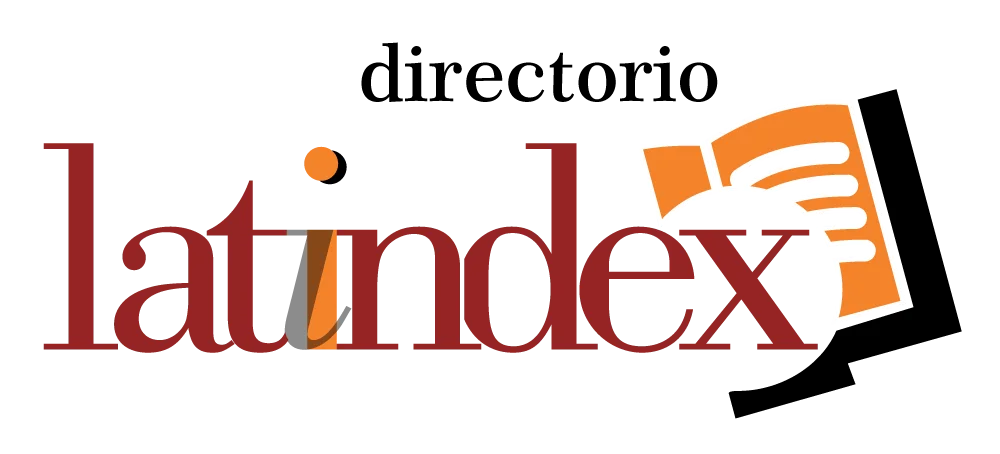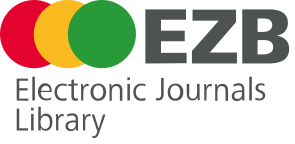Neurocognitive and educational frameworks used to support students with conditions such as dyslexia, dyscalculia, dysgraphia, and dyspraxia
DOI:
https://doi.org/10.56294/neuro2024137Keywords:
Neurocognition, Language disorders, Students, Dyscalculia, Educational strategiesAbstract
Introduction: Understanding neurocognitive frameworks applied to specific learning difficulties, such as dyslexia, dyscalculia, dysgraphia, and dyspraxia, is a fundamental axis for the design of evidence-based educational interventions. These conditions, classified within neurodevelopmental disorders, are characterized by alterations in specific brain circuits that affect the acquisition and automation of essential academic skills, without the existence of a global intellectual deficit. Objective: To describe the neuroanatomical and neurocognitive frameworks related to the support of students suffering from pathologies such as dyslexia, dyscalculia, dysgraphia, and dyspraxia. Methods: A critical analysis of the specialized literature was carried out in September 2025, covering the results of publications made from any year due to the few bibliographies found in three databases: Elsevier, Google Scholar, and PubMed. Clinical, controlled, and randomized trials, including multicenter studies, were included. Development: In the field of neuroeducation, French and German literature has provided intervention models that combine multisensory stimulation with specific cognitive training. For example, the Graphogame program, developed in Finland and adapted in France, has shown efficacy in improving phonological awareness and naming speed in children with dyslexia. Conclusions: Clinical and therapeutic strategies in neuroscience, focused on the treatment of disorders affecting language and the performance of everyday tasks, are linked to the neurocognitive profiles of the aforementioned groups.
References
Catts, H.W., Terry, N.P., Lonigan, C.J. et al. Revisiting the definition of dyslexia. Ann. of Dyslexia. 2024;74(1):282–302. https://doi.org/10.1007/s11881-023-00295-3
Salisa, R. D., & Meiliasari, M. A literature review on dyscalculia: What dyscalculia is, its characteristics, and difficulties students face in mathematics class. Alifmatika: Jurnal Pendidikan Dan Pembelajaran Matematika, 2023;5(1):82–94. https://doi.org/10.35316/alifmatika.2023.v5i1.82-94.
Snowling MJ, Hulme C. Annual Research Review: The nature and classification of reading disorders–a commentary on proposals for DSM-5. J Child Psychol Psychiatry. 2012;53(5):593-607.
Butterworth B, Varma S, Laurillard D. Dyscalculia: from brain to education. Science. 2011;332(6033):1049-53.
Kızılaslan, A., & Avşar Tuncay, A. Dyslexia and the Brain: Understanding the Neuroscience of Dyslexia. Theory and Practice in Child Development, 2023;3(1):119–137. https://doi.org/10.46303/tpicd.2023.7.
Bhushan S, Arunkumar S, Eisa TAE, Nasser M, Singh AK, Kumar P. AI-Enhanced Dyscalculia Screening: A Survey of Methods and Applications for Children. Diagnostics (Basel). 2024;14(13):1441.
Berninger VW, Richards TL, Abbott RD. Differential diagnosis of dysgraphia, dyslexia, and OWL LD: Behavioral and neuroimaging evidence. Read Writ. 2015;28(8):1119-53.
Zwicker JG, Missiuna C, Harris SR, Boyd LA. Developmental coordination disorder: a review and update. Eur J Paediatr Neurol. 2012;16(6):573-81.
Alenezi M, Wardat S, Akour M. The Need of Integrating Digital Education in Higher Education: Challenges and Opportunities. Sustainability. 2023;15(6):4782. https://doi.org/10.3390/su15064782.
Rao K, Ok M, Bryant B. A review of research on universal design educational models. Remedial Spec Educ. 2014;35(3):153-66.
Bishop DV, Snowling MJ. Developmental dyslexia and specific language impairment: same or different? Psychol Bull. 2004;130(6):858-86.
Operto FF, Smirni D, Scuoppo C, Padovano C, Vivenzio V, Quatrosi G, Carotenuto M, Precenzano F, Pastorino GMG. Neuropsychological Profile, Emotional/Behavioral Problems, and Parental Stress in Children with Neurodevelopmental Disorders. Brain Sciences. 2021;11(5):584. https://doi.org/10.3390/brainsci11050584.
Price GR, Ansari D. Dyscalculia: characteristics, causes, and treatments. Numeracy. 2013;6(1):2.
Paracchini S, Scerri T, Monaco AP. The genetic lexicon of dyslexia. Annu Rev Genomics Hum Genet. 2007;8:57-79.
Berninger VW, Richards TL, Abbott RD. Differential diagnosis of dysgraphia, dyslexia, and OWL LD. Read Writ. 2015;28(8):1119-53.
Lohvansuu K, Torppa M, Ahonen T, Eklund K, Hämäläinen JA, Leppänen PHT, Lyytinen H. Unveiling the Mysteries of Dyslexia—Lessons Learned from the Prospective Jyväskylä Longitudinal Study of Dyslexia. Brain Sciences. 2021;11(4):427. https://doi.org/10.3390/brainsci11040427 .
Zwicker JG, Missiuna C, Harris SR, Boyd LA. Developmental coordination disorder: a review and update. Eur J Paediatr Neurol. 2012;16(6):573-81
Licari, M.K., Alvares, G.A., Bernie, C. et al. The unmet clinical needs of children with developmental coordination disorder. Pediatr Res. 2021;90(2):826–831. https://doi.org/10.1038/s41390-021-01373-1.
Rao K, Ok M, Bryant B. A review of research on universal design educational models. Remedial Spec Educ. 2014;35(3):153-66.
Herrán-Landeros, C, Schnitzler Sommerfeld, N. ., Camila Diaz Paez, C. ., Lagrutta Diaz, L. ., & Perez Maulen, C. . (2024). Intervenciones fonoaudiológicas en apraxia del habla infantil orientadas al desarrollo de la comunicación funcional: una revisión de alcance. Revista Chilena De Fonoaudiología, 2024;23(1):1–17. https://doi.org/10.5354/0719-4692.2024.69558.
Lassault, J., Sprenger-Charolles, L., Albrand, J. P., Alavoine, E., Richardson, U., Lyytinen, H., & Ziegler, J. C. Testing the Effects of GraphoGame Against a Computer-Assisted Math Intervention in Primary School. Scientific Studies of Reading. 2022;26(6):449–468. https://doi.org/10.1080/10888438.2022.2052884
Kißler C, Schwenk C and Kuhn J-T (2021) Two Dyscalculia Subtypes With Similar, Low Comorbidity Profiles: A Mixture Model Analysis. Front. Psychol. 2021;12:589506.
Lyytinen H, Erskine J, Kujala J, Ojanen E, Richardson U. In search of a science-based application: a learning tool for reading acquisition. Scand J Psychol. 2009;50(6):668-75
Grube D, Barth A, Kucian K. Adaptive number training in developmental dyscalculia. Front Psychol. 2013;4:584.
Jajo-Yacoub K, Ramirez M. Phonological Differences Across Varieties of Latin American Spanish. CJAM. 2023;1(1):135-48. https://cjam.journals.yorku.ca/index.php/default/article/view/48
Henríquez F, Cabello V, Baez S, Souza LCd, Lillo P, Martínez-Pernía D, Olavarría L, Torralva T and Slachevsky A. Multidimensional Clinical Assessment in Frontotemporal Dementia and Its Spectrum in Latin America and the Caribbean: A Narrative Review and a Glance at Future Challenges. Front. Neurol. 2022;12(1):768591.
Fragkaki M, Mystakidis S, Dimitropoulos K. Higher Education Faculty Perceptions and Needs on Neuroeducation in Teaching and Learning. Education Sciences. 2022;12(10):707. https://doi.org/10.3390/educsci12100707
Jolles J and Jolles DD. On Neuroeducation: Why and How to Improve Neuroscientific Literacy in Educational Professionals. Front. Psychol. 2021;12(2):752151.
Bravo L, Villalón M. Efectos de un programa de conciencia fonológica en niños chilenos. Rev Latinoam Psicol. 2004;36(2):219-40
Torgerson CJ, Brooks G, Hall J. A systematic review of phonics instruction. London: DfES; 2006.
Hall, G. J., van Dijk, W., Chow, J. C., & Borkenhagen, M. J. C. Parallel models of reading and numerical cognition.Canadian Journal of Experimental Psychology / Revue canadienne de psychologie expérimentale. 2025;79(2):129–136. https://doi.org/10.1037/cep0000371.
Rockhill AP, Tan H, Lopez Ramos CG, Nerison C, Shafie B, et al. Investigating the Triple Code Model in numerical cognition using stereotactic electroencephalography. PLOS ONE. 2024;19(12): e0313155. https://doi.org/10.1371/journal.pone.0313155.
Dehaene S. The number sense: How the mind creates mathematics. Oxford: Oxford University Press; 2011.
Ramírez M, Cárdenas J. Intervención en discalculia en contextos escolares mexicanos. Rev Mex Invest Educ. 2018;23(77):945-67.
Howard-Jones PA. Neuroscience and education: myths and messages. Nat Rev Neurosci. 2014;15(12):817-24.
Martínez P, Rojas C. Formación docente en neuroeducación en América Latina. Educ y Educ. 2021;24(1):45-67.
Downloads
Published
Issue
Section
License
Copyright (c) 2024 Emmanuel Zayas Fundora, Jaguer Javier Mora Mejia (Author)

This work is licensed under a Creative Commons Attribution 4.0 International License.
The article is distributed under the Creative Commons Attribution 4.0 License. Unless otherwise stated, associated published material is distributed under the same licence.






